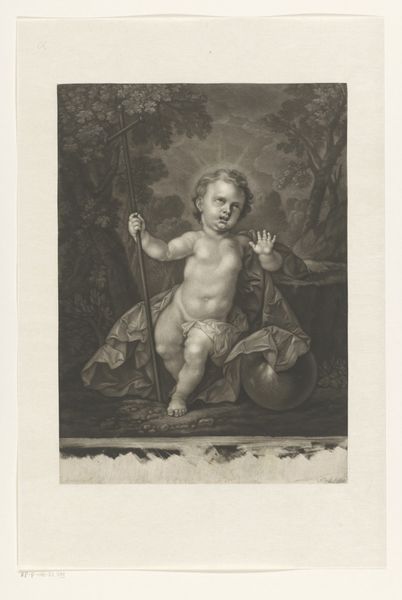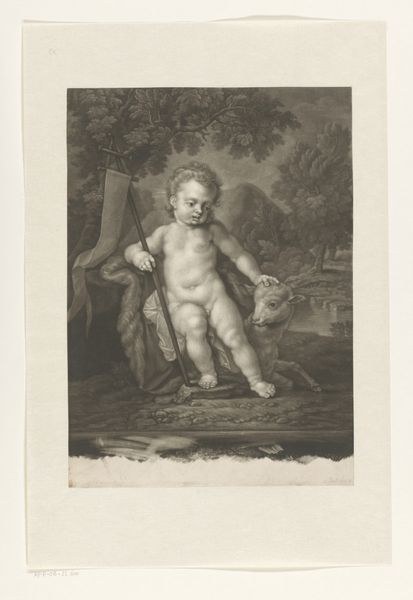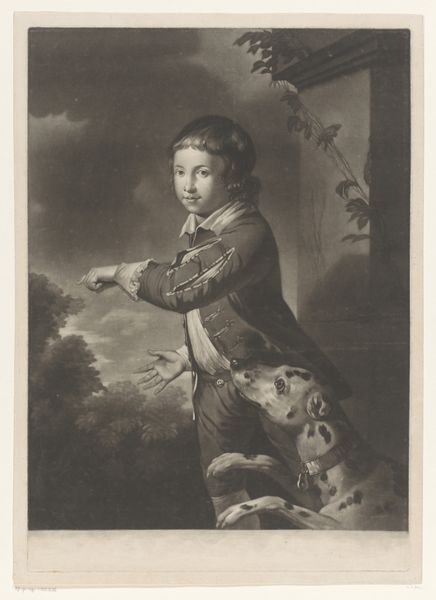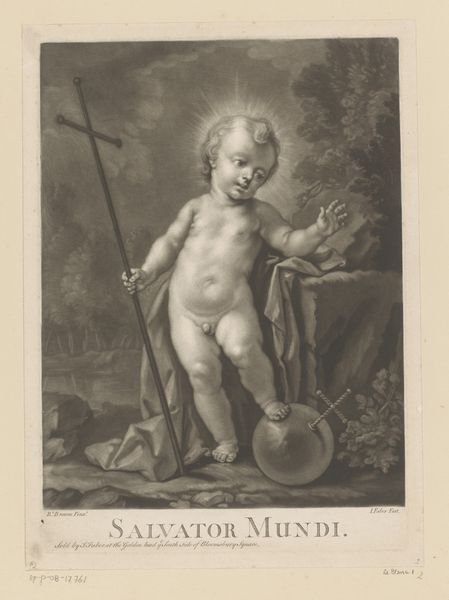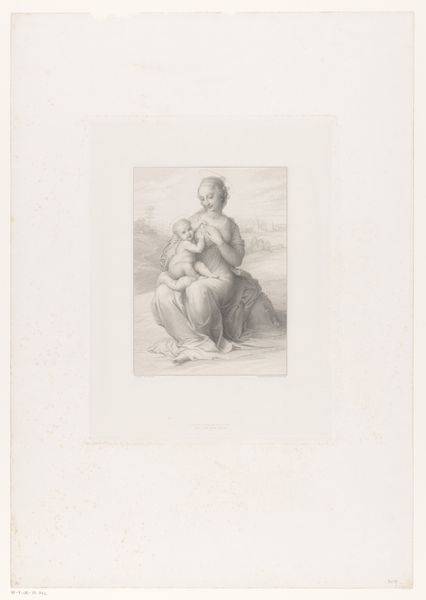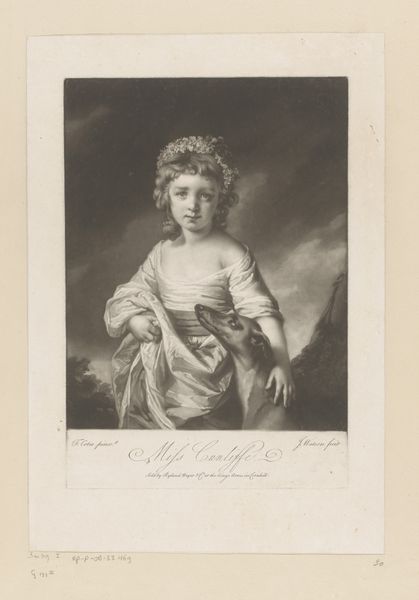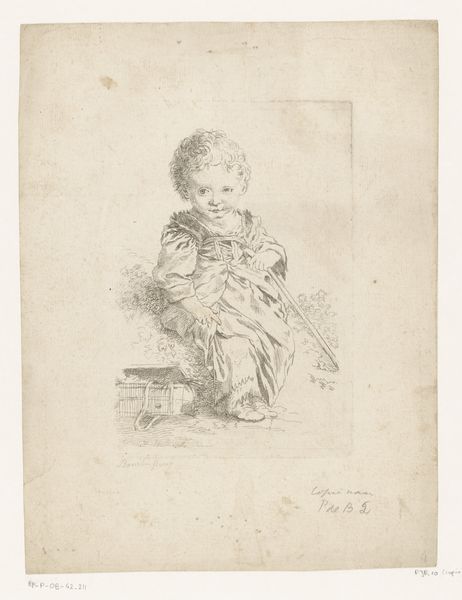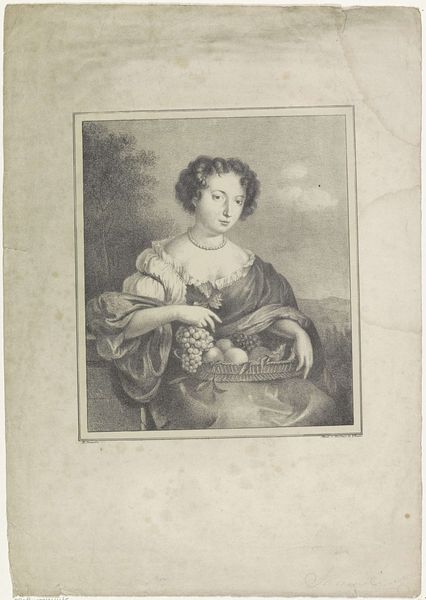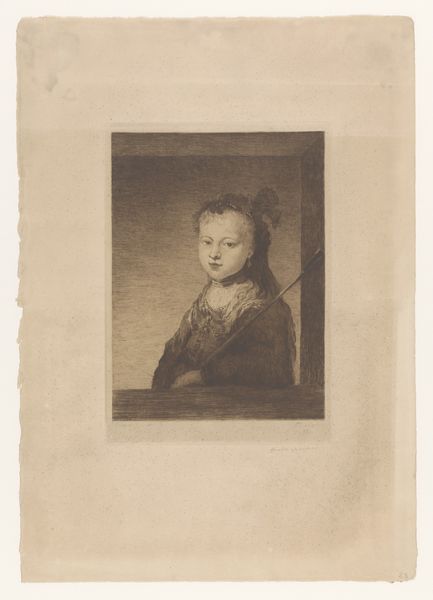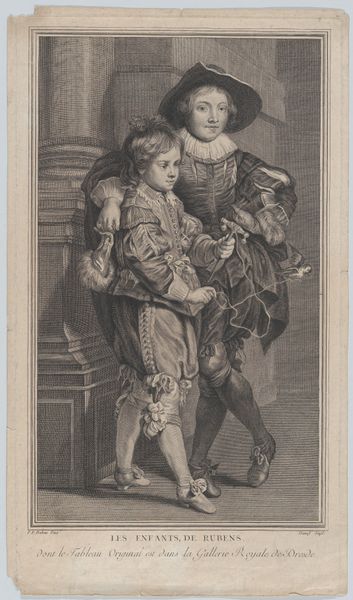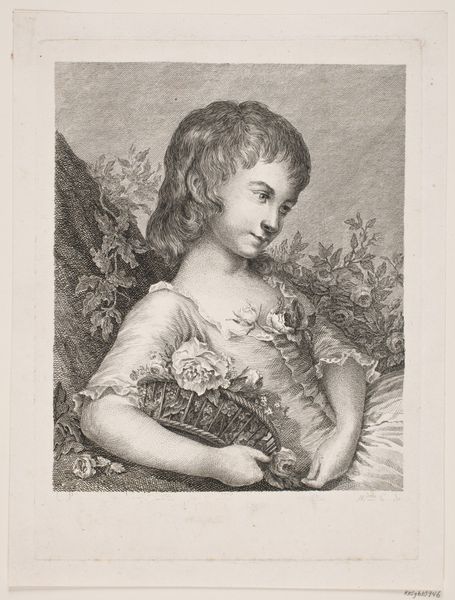
print, engraving
#
portrait
#
baroque
# print
#
landscape
#
genre-painting
#
history-painting
#
engraving
#
realism
Dimensions: height 351 mm, width 250 mm
Copyright: Rijks Museum: Open Domain
This is James McArdell’s mezzotint portrait of Jacob Pleydell-Bouverie, made in the mid-18th century. The mezzotint technique involves preparing a copper plate by uniformly roughening it, then selectively burnishing areas to create lighter tones. This labor-intensive process requires careful control to achieve the desired tonal range and fine details, like the boy’s satin garments. The material qualities of the print—its velvety blacks and subtle gradations—are intrinsic to the technique. Mezzotint was valued for its ability to replicate the textures and tones of oil paintings, making art more accessible to a wider audience through printed reproductions. The fashion and artistry involved in this work also speak to the consumption practices of the wealthy, and of the way that even a child like Jacob could be made a symbol of dynastic power. It suggests the social status of both the sitter and the intended consumer of this print, reflecting class distinctions and economic structures of the time. By considering the materials, processes, and social context, we gain a deeper appreciation for the cultural significance embedded within this print.
Comments
No comments
Be the first to comment and join the conversation on the ultimate creative platform.
